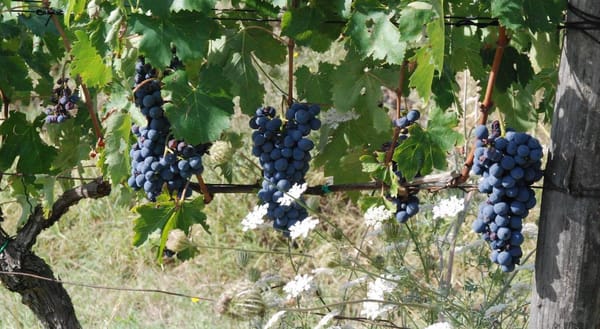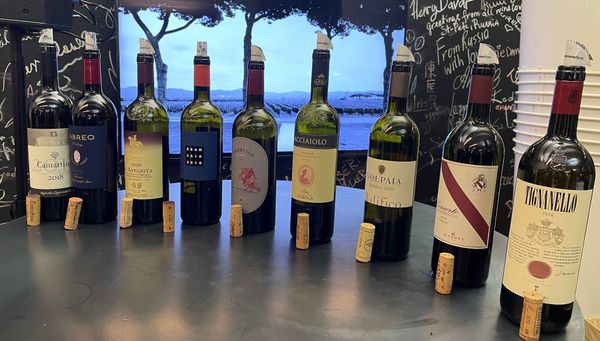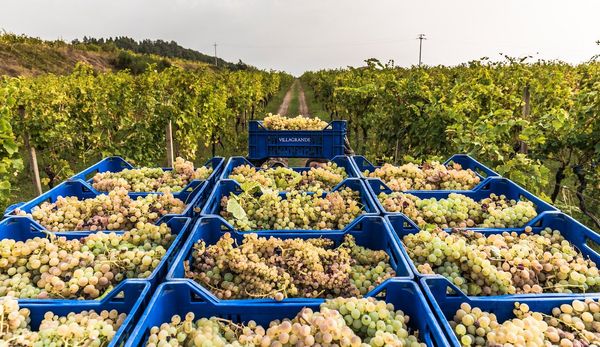The legacy of Moscato di Siracusa


Tomasi di Lampedusa's colourful and evocative portrayal of the creeping, sleepy decline of the Sicilian aristocracy offers a romantic backdrop from which to consider one of the island's more sluggish DOCs. His acclaimed novel tells the story of the Prince of Salina and his family, whose unwillingness to adapt and confront the realities of the modern world resulted in their gradual slide into obscurity. Set during the turbulent Risorgimento period, The Leopard is one of the great pieces of Italian literature, praised as much for its social commentary as it is for its dreamy and exotic depictions of Sicily's fairytale heritage. Think starry skies, fragrant scents of orange and lemon groves, hillsides lined with vineyards and olive trees, and the prickly Indian figs that guide the descent toward the gentle lapping of the foamy Mediterranean against the sand.
The changing of the guard across Europe is a story we're familiar with and we'll likely recall the great families of English houses and French chateaux whose over-reliance on land and agriculture gradually reduced their relevance in society. Yet in Sicily, where both the continued large-scale production of fruit and vegetables and the very visible trappings of rural abandonment seem to sit side by side, one gets a more focused sense of this lost world.
Nevertheless, the cultural legacy of Sicily's ruling classes is there to see. The island is awash with castles, palaces and decorative piazzas that reflect the wealth, power and ambitions of the aristocracy. Beyond the villas of Palermo, the obvious example is the castle of Donnafugata, with which Lampedusa merges his milieu of childhood memories of Santa Margherita di Belice, where he spent idyllic summer holidays in the Palazzo Filangeri-Cutò, a splendid 18th-century building that belonged to his mother’s family. This world also provides the inspiration behind the Rallo family's iconic Donnafugata's brand. The elegant Tancredi for example, a blend of predominantly Nero d'Avola and Cabernet Sauvignon, takes its name from the prince's revolutionary and opportunistic young nephew, who marries beneath his station in order to fund an ascent through politics. "For things to remain the same, everything must change" he proclaims amid an understanding that the old ways will work no more.
If the first Great War hadn't dismantled Sicily's social hierarchy, the Second World War certainly changed everything for ever. Industrialisation and greater economic mobility lead to the final collapse of the Mezzadria sharecropping system that had long determined the quality of wine production. The long standing dynamic between the landowning Padrone and the agriculturally skilled Mezzadri who farmed the land, both inherently reliant on each other, strained until it broke. Taking their knowledge with them, labouring classes joined the waves of urban migration, leaving some of the once great farming estates of Sicily to fall victim to neglect and dereliction.
Elsewhere, such a scenario built on the ravages of the catastrophic phylloxera outbreak and accelerated the demise of one of Italy's oldest wines. Moscato di Siracusa is referenced throughout the city's 2700 year history and connects a veritable name drop of emperors, rulers, conquerors and chroniclers. The Count of Monte Cristo served it to his guests, Alexander Dumas mentions it in his 1873 dictionary of cuisine and his three musketeers are often caught throwing it back. Even Louis XI crammed his ships into port to stock up on the famous nectar.
Produced from Moscato Bianco rather than the increasingly trendy Zibibbo, it officially joined Italy's roster of DOCs in 1973. By the early 1980s however, the oil and wine office of Palermo, responsible for overseeing viticultural activity in Sicily, confirmed that there were no plantings of Moscato left within the DOC. The denominazione was essentially dead. Like the Prince of Salina, it had retreated from public life and disappeared from view.
Along the coastal road north out of Siracusa is the historic fiefdom of Targia, an antiquated bastion of the past, surrounded of course by a sea of modernity. Next door to a Decathlon megastore and an aquatic theme park, its turreted castle, communal church, medieval garden featuring a 150 year old imported Australian fig tree, and extensive plantations of citrus and grapes once again hint at an illustrious past. Antonio Pupillo, the then Mayor of Ferla, acquired the property in 1908 and sought to follow in the footsteps of King Frederick II, who is said to have founded the site along the route to Jerusalem and the Holy Land.
It was here in the late 1980s that his grandson Nino set about preserving Moscato's cultural legacy in Siracusa by initiating a replanting program. Of course, cuttings were taken from nurseries in Piedmont, where Moscato Bianco features heavily in the wines of Asti, but nevertheless, Cantine Pupillo now boast more than 10 hectares of vineyard dedicated to producing Italy's oldest white wine. The domain remains in the family, and today Sebastiano Pupillo and his sister Carmela, continue the work of their father. A couple of others joined the revival. In 1995 Sebastiano Gulino launched Cantine Gulino and named his sweet wine Don Nuzzo while another family enterprise, Fausta Mansio, bottled their first production of Moscato in 2001.
It has indeed been a noble endeavour by the Pupillo family and others to resuscitate Siracusa Moscato, yet like many of Sicily's crumbling rural estates, the wine scene here is still but a glimmer of what once was. For simplicity and efficiency the DOC was amended in 2011 and the traditional sweet Moscato di Siracusa found itself slotted into a more generic appellation that included not only dry versions of the wine, but also the production of red varieties such as Nero d'Avola. Almost a decade on though, there is little momentum.
Regardless, Pupillo's limstone based vineyards, cooled in the morning by sea breezes, impart a softness on the Moscato grape, which in turn delivers its celebrated exotic flavours and aromas. Sitting in the beautiful Piazza del Duomo in Ortigia, contemplating the luscious notes of orange blossom, citrus, raisins, peach, apricot, jasmine, and honey, one can't help but feel that no other wine could quite capture the city's voice like this one.
In Sicily it seems, things must change for everything to stay the same. Let's hope so, for the ancient story of Moscato di Siracusa is one that shouldn't be allowed to get left behind.




